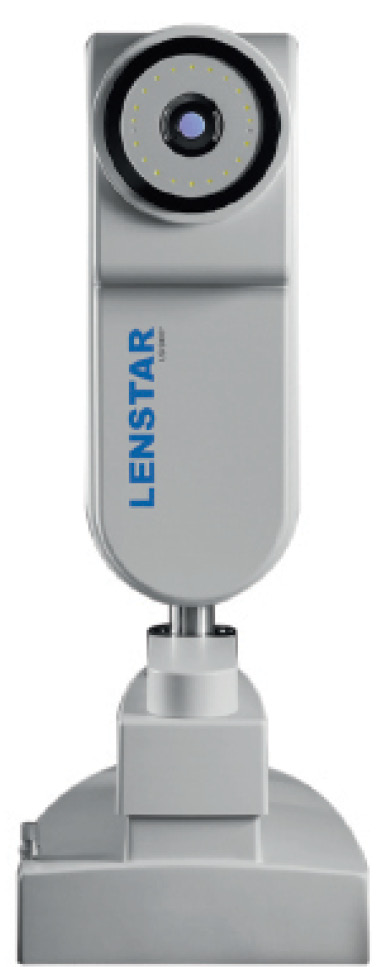The Lenstar LS 900 (Haag-Streit; Figure 1) is an all-in-one biometric unit that provides a complete assessment of the patient's eye in a single measurement procedure, according to the manufacturer.1 The device captures up to nine biometric parameters in one shot, including central corneal thickness (CCT), anterior chamber depth (ACD), lens thickness (LT), axial length (AL), and retinal thickness (RT). It also captures keratometry (K), white-to-white (WTW) distance, and pupillometry and detects eccentricity of the visual axis. All of these measurements can be taken in aphakic, pseudophakic, and silicone–oil-filled eyes as well as in normal cataract patients by selecting the appropriate eye condition.
CCT, as measured by optical low coherence reflectometry (OLCR) technology, is reproducible to within ±2 µm. The device also allows measurement of RT as the distance between the internal limiting membrane and retinal pigment epithelium. Keratometry is measured using a 32-marker Placido pattern.
The included software can assist with IOL power selection and toric IOL planning. EyeSuite IOL, the IOL calculation tool suite on the Lenstar LS 900, offers multiple formulas for state-of-the-art IOL calculation, including the advanced Olsen formula and methods for IOL calculation after refractive surgery. It also features an optional toric planner for improved refractive outcomes with toric IOLs.

Figure 1. A full ocular assessment with the Lenstar LS 900 can be conducted in aphakic, pseudophakic, and silicone–oil-filled eyes as well as in normal cataract patients by selecting the appropriate eye condition.
The add-on T-Cone Toric Platform provides true Placido topography of the central 6-mm of the anterior cornea, with K readings at the 2.3- and 1.65-mm diameter optical zones. The platform also includes the EyeSuite Toric planner, an advanced toric calculator for precise planning of toric IOL implantation using high-resolution images. The EyeSuite incorporates the Barrett Toric Calculator, which uses anterior and posterior corneal curvatures and lens position in its toric IOL power predictions. Topography maps allow the user to verify the axis of astigmatism as determined by K readings. The planner also suggests optimal incision orientation to aim for the lowest toric power suitable for each case.
The LT measurement provided by the Lenstar LS 900 is an important input parameter for the onboard Olsen IOL power calculation formula. The Olsen formula uses the recently developed concept of the C-constant to more accurately predict the postoperative position of the IOL. The IOL position is predicted as a function of ACD and LT. The measurement of LT also improves prediction accuracy with the Holladay 2 formula. Data transfer from the Lenstar LS 900 to the Holladay IOL Consultant is seamless, according to the company.
The Lenstar LS 900 also facilitates IOL power calculation after refractive surgery. The Shammas no-history method, which requires only the input of biometry parameters measured by the Lenstar, is a reliable approach to power calculation in these eyes, even when no clinical history is available. n
1. Lenstar LS 900. Haag-Streit website. http://www.haag-streit.com/products/biometry/lenstar-ls-900r.html. Accessed June 4, 2015.
